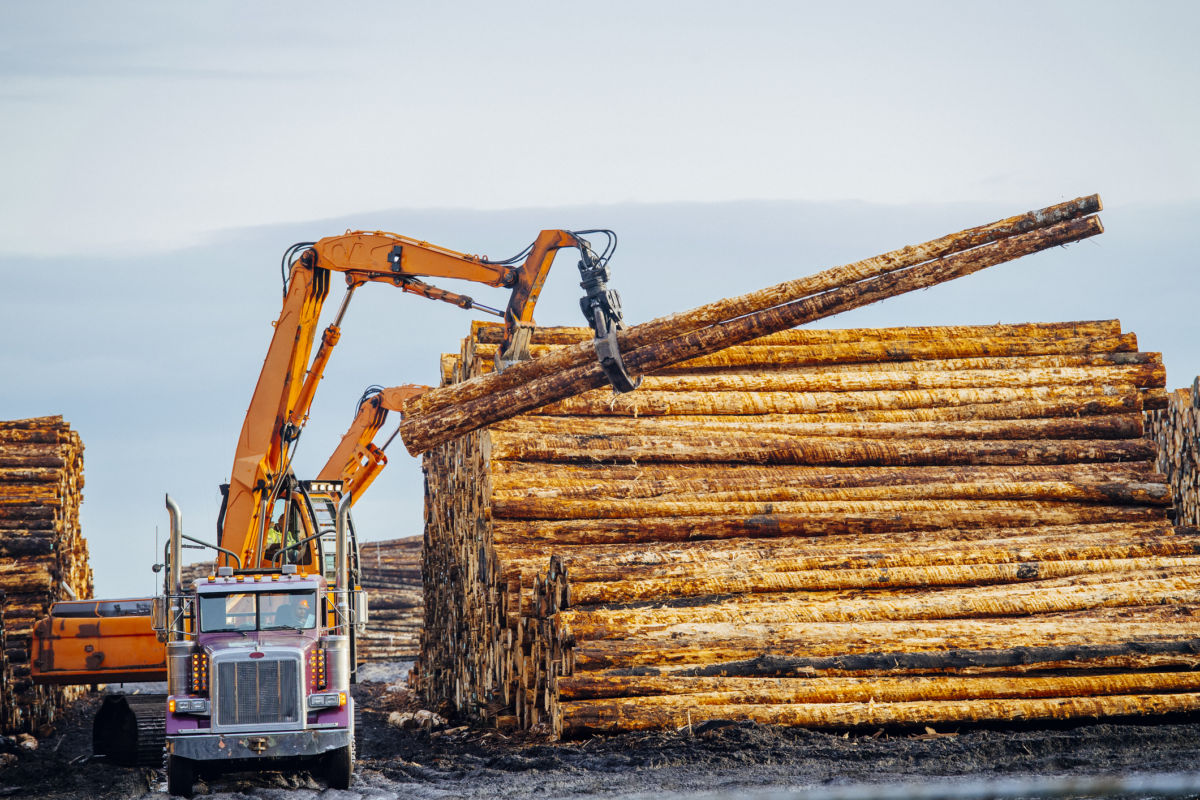Climate change is having a growing impact on Americans and, as the crisis escalates, communities face growing challenges. The latest report from the UN’s Intergovernmental Panel on Climate Change underscores that we have eleven short years to make “rapid transformation across all industrial sectors.
Protecting forest ecosystems is critical in the fight to limit global warming — when forests are disturbed they release carbon, but when left to grow they actively pull carbon out of the air and store it. When left standing, forests also provide optimal natural protection against extreme weather events, like flooding and droughts.
As the Trump Administration and industry allies push for increased commercial logging of America’s forests, we feel compelled to call attention to the elephant in the room: the profound ways in which industrial logging not only decimates ecosystems but also exacerbates climate change.
Many people are aware of the importance of protecting rainforests in Brazil to help mitigate climate change, but few realize that more logging occurs in the US, and more wood is consumed here, than in any other nation globally. The rate and scale of logging in the Southeastern US alone is four times that in South American rainforests.
The Trump Administration and industry have been aggressively promoting misinformation about forests and wildland fires, while advocating for large increases in logging under the guises of “forest health,” “fuel reduction,” “renewable energy,” and reducing carbon emissions. A version of this industry narrative was on display during the recent climate change hearing of the House Natural Resources Committee.
But the promotion of logging to supposedly curb carbon emissions is just part of the Administration’s ongoing alignment with industry and troubling pattern of climate science denial. Carbon emissions from logging in the US are ten times higher than the combined emissions from wildland fire and tree mortality from native bark beetles. Fire only consumes a minor percentage of forest carbon, while improving availability of key nutrients and stimulating rapid forest regeneration. Within a decade after fire, more carbon has been pulled out of the atmosphere than was emitted. When trees die from drought and native bark beetles, no carbon is consumed or emitted initially, and carbon emissions from decay are extremely small, and slow, while decaying wood helps keeps soils productive, which enhances carbon sequestration capacity over time.
On the other hand, industrial logging — even when conducted under the euphemism of “thinning” — results in a large net loss of forest carbon storage, and a substantial overall increase in carbon emissions that can take decades, if not a century, to recapture with regrowth. Logging also tends to make fires burn faster and more intensely while degrading a forest ecosystem’s ability to provide natural protections against extreme weather events.
Consider this: About 28 percent of tree carbon is contained in branches, and this is emitted when they are burned after logging operations. An additional 53 percent of the carbon in trees removed from forests is emitted as waste in the manufacturing and milling process. Overall, about two-thirds of the carbon in trees that are logged for lumber quickly become greenhouse gas emissions.
When trees are cut down and burned to generate “biomass” electricity under the guise of “renewable energy,” 100 percent of the carbon is emitted. Incinerating wood for energy emits evenmore CO2 than burning coal, for equal energy produced. Yet, the expansion of US production of wood pellets to fuel power stations in Europe has been spreading like wildfire across the Southeast, accelerating the destruction of some of our nation’s most ecologically-important forests and putting the health of some of the nation’s most vulnerable communities at increased risk.
The Administration’s efforts to demonize standing dead trees (“snags”) in forest ecosystems is also factually challenged. We have considerably less fire now on the landscape than we did historically, and the “snag forest habitat” created in some places by fire and native bark beetles is an ecological treasure — comparable to old-growth forest in terms of native biodiversity and wildlife abundance. Woodpeckers and shrub-nesting birds flourish in forest ecosystems following fire, as do elk and deer because of the abundance of nutritious understory vegetation that rapidly grows there.
To effectively mitigate climate change, we must stop burning carbon for fuel and greatly increase forest protection. If we take ambitious steps to protect vastly more of our forests from industrial logging, we can avoid emissions while also actively absorbing large amounts of carbon from the atmosphere and storing it back on land in the forest where it belongs.
Now is the time for such bold action. We can protect our National Forests and scale-up protection on private lands, while ensuring a just economic transition by redirecting logging subsidies into green jobs that help create fire-safe rural communities in the West and restore natural flood control in the Southeast. We must create new incentives for landowners who protect forests instead of logging them. This approach has recently been endorsed by over 250 climate change and conservation organizations, scientists, and policymakers. We simply cannot solve the climate crisis without reducing the climate impacts associated with the large-scale industrial logging of America’s forests.
Join us in defending the truth before it’s too late
The future of independent journalism is uncertain, and the consequences of losing it are too grave to ignore. To ensure Truthout remains safe, strong, and free, we need to raise $17,000 by midnight tonight. Every dollar raised goes directly toward the costs of producing news you can trust.
Please give what you can — because by supporting us with a tax-deductible donation, you’re not just preserving a source of news, you’re helping to safeguard what’s left of our democracy.
